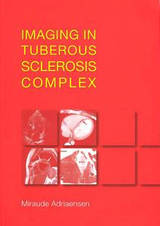Imaging in tuberous sclerosis complex
M. Adriaensen
- Promotor: W. Prokop
- Copromotor: C. Schaefer-Prokop and B. Zonnenberg
- Graduation year: 2011
- Utrecht University
Abstract
Since 1995, the University Medical Center Utrecht is a nationwide referral center for patients with tuberous sclerosis complex (TSC). Aim of this thesis was to make a start with the systematic evaluation of imaging in patients with TSC followed at our institution focusing on the heart, the lungs and the brain. In a case-control study, we examined the morphologic characteristics at CT of focal fatty foci noted in daily practice in the myocardium of patients known to have TSC. The fatty foci appeared to have unique CT characteristics consisting of a combination of focality, well-circumscribed form, location into the mid myocardium, pure fat density, absence of enhancement, and absence of invasive behavior. Because these characteristic well-circumscribed foci of fat attenuation were found in the myocardium at CT in the majority of patients with TSC (35 of 55 patients) and not in the control group, such fatty foci may help identify patients suspected of having the disease. Histopathology in patients with TSC showed multiple areas of mature fat cells in the myocardium without associated inflammation, without associated fibrosis, without entrapped myocardial cells, and without a capsule which seem to be unique for tuberous sclerosis complex. Adding these fatty foci in the myocardium seen on CT, MRI, echocardiography and histopathology to the list of major features of the current clinical diagnostic criteria for TSC may be considered in the future. In a cross-sectional study we reviewed the most recent CT scan of the lung bases for radiologic evidence of lymphangioleiomyomatosis (LAM) in a cohort of 186 adult patients with known TSC. Our study demonstrated pulmonary thin-walled cysts with intervening normal lung parenchyma in the lung bases in 28% of adult TSC-patients (52 of 186 patients). Gender specific prevalence was 0.42 in female and 0.13 in male TSC-patients. In another cross-sectional study we reviewed the most recent contrast-enhanced CT scan of the brain for radiologic signs of subependymal giant cell tumors (SGCT). Our study demonstrated radiologic evidence of SGCT in 20% of TSC-patients (43 of 214 patients). Gender specific prevalence was 0.18 in female and 0.22 in male TSC-patients. In addition, a meta-analysis of the reported prevalence in the English language literature, and our own study was performed. The resulting pooled estimate of the prevalence of SGCT in TSC-patients was 0.11 (95% CI:0.09, 0.14). The prevalence of SGCT in TSC was higher in studies using radiologic evidence to diagnose SGCT (0.16; 95% CI: 0.12, 0.21) than in studies using mainly histopathologic evidence (0.09; 95% CI:0.07, 0.12).
